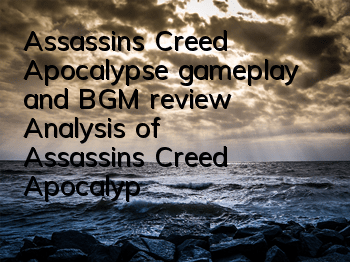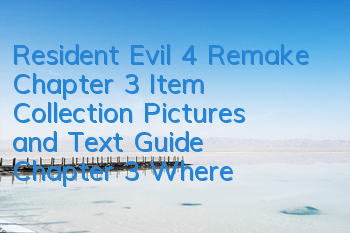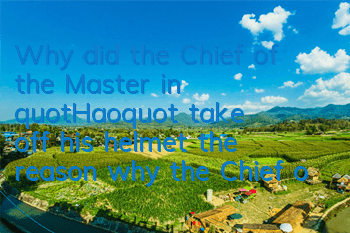"There are no books, and no things of wisdom here. Only you, my brother."
Foreword
Assassin’s Creed: Revelations is the last orthodox sequel to the Assassin’s Creed series “Old Slut” trilogy. It was completed by Ubisoft Montreal Studios. In addition, Annecy, Massive, Quebec and Singapore’s Bucharest Studios worked together to end the entire Assassin’s Creed series of masterpieces. Apocalypse inherits the gameplay of action adventures and role-playing in the previous few works, and basically continues the characteristics and styles of the first two works in terms of plot, gameplay and picture style.
(Game Wallpaper)
Picture Review
The picture of "Assassin's Creed: Apocalypse" has added many picture expressions with the unique style of the medieval Ottoman Empire on the basis of inheriting the realistic works of its first two brothers. The pictures of the clothes and architecture are basically dark tones, and the first two works are appropriately reduced to a lot of light tones composition, which makes the picture more exotic from the perspective of our oriental players or from the perspective of Western players.
Apocalypse is very delicate in the details of objects and buildings, especially for low-end computer players. Apocalypse is even better in terms of clarity and optimization than the 3 generations released after it. However, it also has disadvantages on the screen. For computers whose configurations or drivers are somewhat incompatible with them, the apocalypse will cause screen shaking and frame skipping. At this time, the player deletes a file named systemdetection.dll in the root directory of the game, and this problem is likely to be solved.
The buildings with the unique style of the Ottoman Empire in the game are also worth mentioning. Ottoman architecture is a popular architectural style in the imperial ruling areas during the Ottoman Empire. It originated from Seleucism and was influenced by Byzantine style architecture. At the same time, Mamuluk architecture, Armenian architecture and Iranian architectural styles are also reflected in Ottoman architecture. For example, the halal architecture of Hagia Sophia is a typical representative of Ottoman architecture. In the Apocalypse game, compared with its first two games, it is a first-class restoration in the game world.
(Halth Sophia Cathedral in the game)
BGM Review
As a "music company that has been delayed by games", the soundtracks for the entire Ubisoft Assassin's Creed series have always been remarkable, especially the three-part Ezio's family. For example, the melody of the second generation "Ezio's family" is basically paid tribute to all subsequent BGMs in the same series. authorAlthough the melody of the second generation Assassin's Creed is not as good as that of their second generation, its excellence is no less than that of them. The theme song of the game of the Apocalypse is called "Iron-Woodkid" or directly called "iron". I believe that all players who have played this work will be attracted by its magnificent momentum. The songs in the Assassin's Creed series seem to have a magic power that transcends time and space, which can introduce players to the era where the protagonist is. Once this song of the Apocalypse is heard, before the player has contacted the plot, the scene of a distant and magnificent foreign country or castle may appear in front of the player. After understanding the plot, players will have a deeper and more perspectives of the theme song.
Plot Analysis (including spoilers)
The plot of "Assassin's Creed: Apocalypse" is still divided into two lines, modern plot and ancient plot, just like the previous work. If it is precisely divided, it can actually be divided into three lines. The ancient plot line can be divided into Egio line and Altay's legacy memory line. These two lines will blend in the end. Altay's story line is a supplementary effect to the first generation of plots.
(In Masiaf, the encounter between Egio and Altaïr across time and space also laid the groundwork for the subsequent extension of two story lines and the final integration)
The plot of Apocalypse follows his previous work "Assassin's Creed: Brotherhood". The modern plot tells the story of falling into a coma after Desmon stabbing Lucy to death and being sent back to the gene memory traceability machine "Animus 2.0" to avoid mental breakdown. On the virtual "Isle of Animus", Desmon met the remaining consciousness of the Sixteenth experimental subject. He told Desmon that he had to enter the memory that Altaïr and Egio had not read, so that Animus 2.0 could separate the memories of the three people and reorganize the consciousness to awaken. During the subsequent exploration process, collecting fragments to unlock Desmon's special levels will solve the mystery of Desmon's life experience and why it became Animus' experimental subject.
In the ancient plot line, it tells the story of Egio going to Masiaf in 1511 and learned that Altay was hiding a mysterious thing in the secret room. The way to unlock the blockade. In Constantinople, the capital of the Ottoman Empire, Egio, with the help of Sophia and the Ottoman prince Suleiman, searched for the key to carry Altay's memory. He went through many obstacles and helped Suleiman win the political struggle for the throne. Egio finally successfully opened the secret room, and then the "famous paintings" in the game world appeared. The game cleverly used a lens conversion to show the meeting between two assassin mentors across time and space. After Egio left the fragments, he hoped that Desmon could find all the answers to the problems they had found throughout their lives for him and Altay. Finally, Jupiter, a member of the First Civilization, appeared and told the secrets of the past and the location of the central secret room. At this time, Desmond in the modern world woke up.
("Famous Paintings of the World" in the Game World, "There are no books, and no things of wisdom here. Only you, my brother.”)
The plot setting of this work is a summary and sublimation of the first two parts. In the main process, the Apocalypse is the shortest work in the trilogy, but its meaning is the most in the trilogy, especially in the last scene. When Jupiter appears, players can find that the Altaïr and Egio, who we play, struggle to end their lives, but they all act as a soundtrack. In a sense, this can be regarded as a tragic character or other situations. The author does not want to say it to death in this review. For games with profound meaning in this type of plot, there can be said that there is no standard answer when interpreting this kind of plot. As long as it is a reasonable and well-founded interpretation, it is worthy of respect, and different players can have different experiences. Similarly, the meaning of the creed "Everything is empty, everything is allowed." has also been deepened in Revelation. As for how players understand it, there is no standard answer. The author speculates that there is no standard answer. It may also be the truth that the assassin's creed "Everything is empty, everything is allowed" to teach us.
Real historical introductions reflected in the plot
Assassin's Creed has always been a game with a strong historical atmosphere. Playing a historical game, especially like Assassin's Creed, after understanding its real historical background, it often has a different experience than if it does not understand its history. The most important historical events reflected in the Apocalypse game are the story of Suleiman the Great before the ascension of the throne. In other words, it is the story of Selim I, but the focus of the game is on the court struggle.
The period set in the game with Assassin's Creed. In the same period in real history, Suleiman was indeed a person in history, that is, one of the greatest monarchs in the history of the Ottoman Empire - Suleiman the Great. Suleiman the Great was also known as Akbar I of the Mughal Dynasty in India and Abbas I of the Persian Safi Dynasty. Later generations were more accustomed to and called him Suleiman the Great. During his glorious conquest career of 46 years of reign, Suleiman expanded the territory of the Ottoman Empire to the west, and even endangered Vienna. However, during his reign, he formed problems such as harem interference in politics and fritillar collusion during his later period. In fact, this was also the beginning of the decline of the Ottoman Empire.
The story in the game basically happened before Suleiman ascended the throne. At the beginning of the game, it was in 1511. At this time, the Sultan of the Ottoman Empire was still the eighth Bayezid II. In the chapter when Egio arrived in Constantinople, if players carefully observe the NPC dialogue, they can find information about talking about Bayezid II. Suleiman's father was the ninth Sultan Selim I. Selim ascended the throne in 1512. To be precise, it was a coup usurped the throne. Selim seized the old capital by force and forced his father to abdicate on April 25, 1512. Suleiman entered politics at the age of 15 and accumulated ten years of experience during his tenure. During this period, Selim carried out many eastern expeditions. This can also be learned from the game dialogue in the later stage of the game. After Selim died of illness on the way to Edirne on the way to Edirne.Suleiman returned to Istanbul to ascend the throne. His father executed more than 20 princes during his ascension to the throne, and eventually left Suleiman. In the game, the player's role as Egio helped Suleiman defeat his brotherly competitors while searching for hidden keys during this period.
(Eggio and Suleiman in the game)
Commentary on gameplay and operation
The gameplay and operation of "Assassin's Creed: Apocalypse" is basically the same as the previous work Brotherhood. Based on the existing gameplay of the Brotherhood, the Apocalypse has increased the types of weapons and set up a brand new bomb production system. Players can make bombs of different effects according to their preferences and tasks. At the same time, the game has an extra "hook blade" item than the previous work, which can make players climb walls faster, and ziplines make the roof parkour more coherent than the first two games. The continuous killing system has also been replaced with some new actions to enhance gameplay.
The gameplay of "animus Island" in the Apocalypse is similar to the gameplay of the Brotherhood that can freely exit the Animus machine in the previous work. However, the Apocalypse is more interesting. The production team modified the gameplay of the Brotherhood that only triggers dialogue. Players can experience the Desmond story on the Animus Island. The small levels of the Desmond story take into account the plot and decryption, which is very playable. The ancient plot of the game is divided into two lines: Egio and Altaïr through the keys collected after each chapter. The two-line narrative can better let players understand the plot and their feelings about the spirit of the assassin organization. However, the main and branch lines of the Apocalypse are shorter, and some lack sustainable playability.
Revelation also adds tower defense gameplay. Players need to use reasonable assassin troops to resist the Templar's attack on the assassin stronghold. Although this design is good, during the actual gameplay, I feel that the tower defense system in the Revelation is not balanced, and I just make the tower defense look, but I don't encounter the root of tower defense. However, it is also a very good method to add this gameplay in this action adventure game.
Written at the end
Many people in the online game circle have said, "There are no assassins after Egio." Whether it is playing memes or real, this actually reflects how important the Egio trilogy is in the minds of players. Ubisoft has many excellent works in the Assassin's Creed series after Egio. At the same time, some works are indeed seriously "formalized" and produced "canned". However, in the Temple of Heroes released last year, the author has seen the progress of the Assassin's Creed series. In short, I hope Ubisoft will not let down the expectations of players in its future new works, and hope to produce sincere works so that the old assassin fans can feel the happiness of the past.









